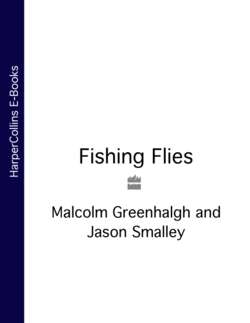Читать книгу Fishing Flies - Smalley - Страница 8
HOOKS
ОглавлениеA hook is the one essential ingredient in every fly. Since the 1960s the number of hook types designed for fly-tying has increased greatly, and some have been devised for the tying of one special style of fly. An early example of this came with the book The Trout and the Fly (1980) by John Goddard and Brian Clarke, and its accompanying TV/video spin-off. Though the first upside-down dry flies had been tied on ordinary dry fly hooks, hookmakers Partridge of Redditch were persuaded to produce special USD hooks that helped keep the point and bend of the hook pointing upwards, out of the water. Three decades on and the USD hooks are no longer made and consequently the flies promoted by Goddard and Clarke are rarely, if ever, tied. A current example is the Klinkhamer, a very popular emerger pattern devised by Hans van Klinken (see here). Originally the fly was tied on Partridge Long Shank/Caddis hooks code K12ST, later a special Klinkhamer hook code GRS15ST. Should Partridge (part of the Mustad company) cease the manufacture of these hooks, then it will become impossible to tie Klinkhamers … Well, not quite. Parachute emergers, of which the Klinkhamer is but one, can be tied on a range of hooks – just observe the commercially tied Klinkhamers available in tackle stores!
Many tyers who publish their fly recipes give quite precise instruction as to what hook should be used: manufacturer and hook code. Here, precise hook sizes are given, but other than that, usually only a general category is given: e.g. wet fly, size 14; dry fly, size 18; stainless steel streamer, size 2/0; midge, size 22–28; salmon low water, size 6–12. Readers may then examine tackle catalogues, or visit tackle shops or web sites and choose an appropriate hook by their favourite manufacturer. If a fly recipe specifies that a fly must be tied on one specific hook, it becomes defunct if that hook becomes unavailable or the manufacturer goes bust.
Perhaps the best piece of advice when it comes to choosing which hook to use comes from George Selwyn Marryat, the driving force behind the great and sadly maligned pioneer of the dry fly, F. M. Halford. A good hook, said Marryat, ‘should have the temper of an angel and penetration of a prophet; fine enough to be invisible and strong enough to kill a bull in a ten-acre field.’ In other words, buy the finest and strongest hooks you can find for the fly-tying bench and with an eye to the fishing situation in which it will be used.
TIP: With the increasing prevalence of ‘catch-and-release’ – either because of fishery rules or reduced fishing stocks – buy barbless hooks, or crush the barb before tying the fly.
